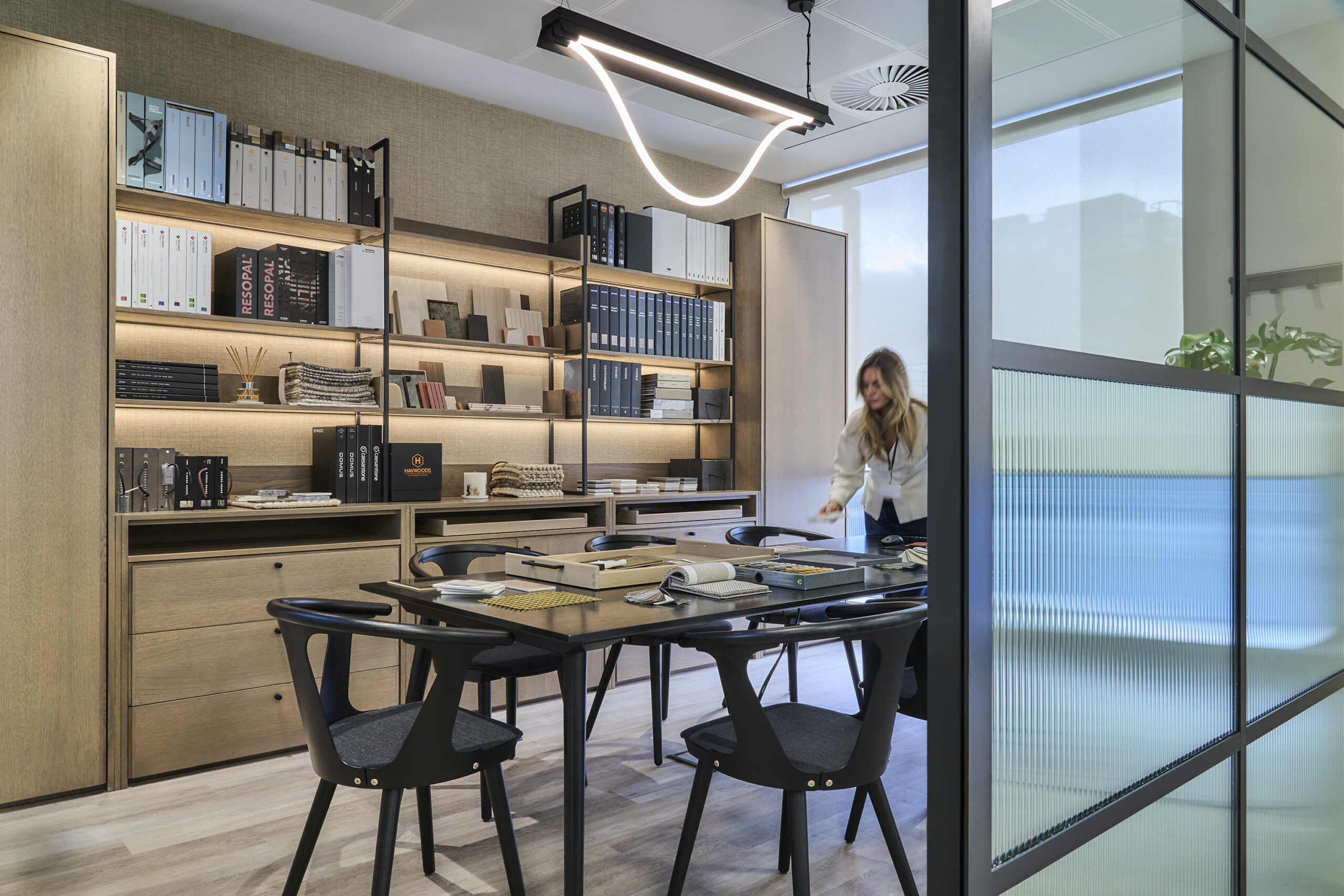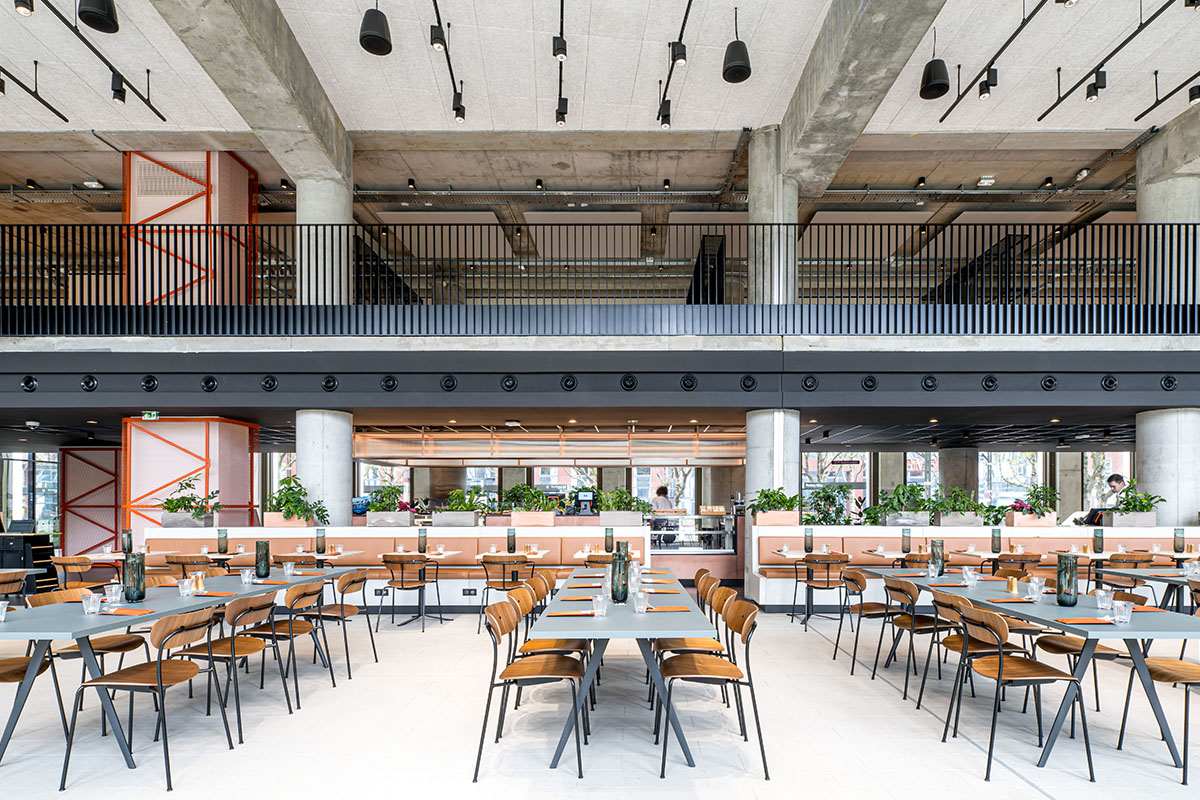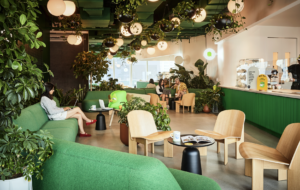
 Words by Michael Willoughby
Words by Michael Willoughby
Michael Willoughby met Despina Katsikakis of DEGW to discuss her policies on new builds and the future of architecture
When I read that Despina Katsikakis, chairperson of leading corporate architecture firm DEGW, had announced to a shocked MIPIM that she thought architects should only build new office space as a last resort, I knew I was going to have to ask her about it.
Even Steven Harding, the diplomatic head of public affairs at the RIBA, said it was “naive to expect a ban on new buildings”.
So how was I expecting the conversation to go? Had Greek-born, Chicago raised and trained Katsikakis woken up one day, looked at the destruction all around and donned the sackcloth and ashes?
I certainly wasn’t expecting to be thrust into the middle of an MBA seminar with post-graduate architectural leanings. Her speech veered between the threadbare marketing – “knowledge transfer”, “benchmark”, “business critical” – and the wordy academic, producing phrases such as “husbandry”, “engagement arena”, and “concentrative”.
So unready was I for this flow that at one point during a run of the latter I found myself asking Katsikakis, “Death of architecture?!” as though I was suddenly expostulating an urgent question on a late night arts show of the 1980s.
“No,” she replied; au contraire, basically. Critics of Katsikakis might offer the rejoinder that she doesn’t build anything anyway. She hasn’t sat in front of a drawing board or a CAD programme for many years. Instead, she, along with senior DEGW colleague Frank Duffy, is a pioneering researcher.
For instance, her team won the contract to redesign Boots’ HQ in Nottingham (which included a purpose-built Grade II listed SOM-designed block) with a blob and some arrows. On the other hand, Katsikakis found her first experiences of actual building – large office fit outs in Chicago – “less satisfying”.
“I discovered that you use standard floor plates and detailing and you redesign the skin and top and that’s it,” she says. “So building was really just a shell with no real integration of what it was about.”
It’s a recurrent theme: the fact that, contrary to what many designers and architects feel, design for design’s sake and building for building’s sake just won’t do. It’s not enough for Katsikakis. Instead, she found job satisfaction in London in the early 1980s, when working with Duffy as he investigated the changes in the City, which would lead to the development of Rosehaugh Stanhope’s controversial Broadgate Complex (now owned by British Land). This office development, replete with Rockefeller-style skating rink, was the largest in London until the advent of Canary Wharf, and it was Katsikakis’ first important “build”, she tells me.
“I started working here on what I thought was going to be a summer looking at the impact the change in organisational demands and technology [following deregulation] would bring to the City of London,” says Katsikakis. “It was a completely eye-opening experience looking at architecture from the inside out in a different way from what anyone in the States was doing at the time. It has been a very long summer job!”
Katsikakis assures me that what she and Duffy were doing in the 80s was absolutely pioneering – things like working out a building as specific layers of time – 60 to 80 years for the fabric, 20 years for the services, etc. Instead of examining a building as a static object, they looked at it as an evolving one. “It’s interesting, now we think of sustainability from a specification standpoint,” she says. “But all that thinking was about how you drive buildings harder; how you make the building shell adapt to multiple uses, over time. It’s about sustainability, because you don’t have to rebuild.”
But, to return to “the death of architecture”, what can Katsikakis mean by all this, exactly, if not the death of the project, the end of history the abandonment of the dream of universal progress expressed through construction?
First up, there can be no doubt that she thinks there is a moral imperative to reduce resources, recycle and refurbish. She talks about the importance of not “using up more of the planet” than is necessary. She lives by that example. DEGW is situated in a converted 19th-century warehouse, Porters Yard, in soon-to-be-trendy Kings Cross.
However, I believe Katsikakis’ injunction comes directly from her and DEGW’s aforementioned and unique approach as a research-based organisation. It is the figures combined with the fear of what might be if things carry on the way they have been that prompted her to speak out.
“We have never looked at a company that used its office space more than 40 to 45 per cent. Never,” she says, with quiet conviction. “That’s already half of the work day, the environment isn’t used. But if you extrapolate that across the year that means we are using office buildings for 10 per cent of the total time and 90 per cent all the power is on standby. And we are talking about sustainability! It’s a very scary piece of data if you really begin to think about it. If you take educational buildings, it’s even less.”
What seems to scare Katsikakis, then, is as much the damnable inefficiency of it all as much as ensuing natural disaster. Like many sustainability wonks, she can sense an opportunity to tidy things up a bit; to do a bit of rational spring-cleaning.
The type of planning she’s talking about – building recycling, I guess you could call it – has been successfully carried out. She points to Waterloo’s Oxo Tower as an example
of a standout development in her terms.
“It maintains part of the existing envelope,” says Katsikakis. “It rethinks the functions. It engages the community. It creates some spaces for living, some for working and some for entertaining, and it’s a landmark building. That’s a much more sustainable answer than producing a brand new building just for the sake of it. I’m not saying that there’s no valid room for new buildings, but it should be the last option having explored what we do with the space we have.”
Beneath the radical embargo on new building, this is a pretty workaday argument. But for Katsikakis, it goes deeper: “If you look at the world today with more and more mobility, more and more interaction, I think the challenges for design are bigger than they have ever been before, because if you can choose to go anywhere or stay at home, you would only choose to go places that provide very special experiences.”
In other words, we continue to build humdrum office space at our peril, or in denial, because the drivers for home working – carbon footprint control, rising oil prices, growing corporate responsibility awareness – are growing stronger.
And space sharing is gaining credibility in some arenas. Work she did to help Shell build a training centre resulted in the idea that all the signage should change at the weekend and Holiday Inn would install a golf hotel. Apparently, this ended up with the foundation of a wildly successful cabaret – and some puzzled looks on the faces of bored Shell executives finding pink feathers and glitter on the floor, one presumes.
Katsikakis says she doesn’t know anyone who doesn’t work from home at least some of the time (unwittingly saying something about her circle of friends – no wage slaves, there) and I tell her that I often end up writing on the sofa. She laughs, and says, “We design homes as we did 100 years ago. But at your office you have an incredibly over-designed ergonomic chair that is assuming you are working on it nine to five. It’s a complete contradiction.”
Katsikakis says that she thinks design will become more – not less – important as more people work from home and office space becomes less prevalent. “It’s almost the more virtual we become the greater the importance of the physical space in order to be able to create special, memorable experiences.”
Which is all very well for the DEGWs of the world, but rather alarming news for the commoditised end of the market – the fit-out firms, the furniture makers, the jobbing architects and builders: but her prediction does not contradict any trends.
What else can she say about what’s to come?
“There are three things [that we know] about the future: that there will be more mobility, that buildings need to become simpler, so they can accommodate a variety of functions over time and therefore be more sustainable and usable. And at the city scale, they need to become more complex. Mobility, simplicity and complexity are the three things. The role of design is at a fantastic place. Design is the enabler for the future.”
I ask her whether the architects at DEGW ever struggle with the very corporate way the firm does things, or whether they know what they are letting themselves in for.
“Architects here feel more empowered than in a conventional firm, because as I said before, the data, the research background thinking allows them to validate their design decisions. It’s very empowering for designers to get up and not only have a concept that comes from very strong design sensibility, but also a concept that is defensible on so many different levels. I see it as much more of a liberating thing.”
And as we carry on into a world where, perhaps, it will become increasingly hard to build as freely as in the past, that kind of defensibility will, one imagines, become increasingly comforting.
Katsikakis says that a branding firm once did an audit of DEGW. “They said that the one thing that distinguished DEGW in the whole design landscape is that it has consistently predicted and delivered the future.”
With her charts and surveys, her friends in high places and her obvious intelligence and charm, I don’t suppose that Katsikakis will be wrong on this front either.



















